
How These Top 10 Universities In Canada Can help You Make Your Dreams come True
Canada is home to ten of the world’s top 250 universities. Small universities with intimate learning settings to huge research-intensive universities with world-class reputations make up our higher learning institutions.
Canada is renowned as a cosmopolitan country with a diverse heritage, with ten provinces and three territories ranging from predominantly French-speaking Quebec on the Atlantic east coast to British Columbia on the Pacific coast. Canada has a global reputation for intellectual excellence, as well as being consistently ranked among the finest countries in the world for quality of life.
Canada can also offer less expensive education options than most other anglophone countries, as well as easier application processes and more prospects for permanent residency after graduation.
There are numerous reasons why Canada has become a popular study abroad destination for international students. Many Canadian institutions have a strong worldwide reputation, and many universities offer courses in both French and English.
Here is the 10 best list of universities in Canada:
1. University of Toronto, Ontario

The University of Toronto (commonly known as UofT) was founded in 1827 and is regarded as one of the world’s greatest research-intensive universities, as well as for its medicine school and historic structures.
The Institution of Toronto is a public university in Toronto, Ontario, Canada, that is frequently rated as the best university in the country. The university has a QS world ranking of 26 for 2021 and is highly known for its numerous master’s and undergraduate programme offerings.
Academic divisions concentrating on a variety of fields, such as applied science and engineering, management, and public health, make up the institution. The university provides over 200 master’s and doctoral programmes in addition to 700 undergraduate programmes. English is the primary medium of education. The academic calendars of the three campuses differ. On each campus, student housing is available, and all first-year undergraduate students are guaranteed lodging.
University size: Mississauga, St. George, and Scarborough are among the three campuses. Students at the St. George campus are divided into seven colleges, comparable to the Cambridge University system. For the 2019-20 school year, almost 93,000 students have signed up.
More than 44 libraries store more than 19 million physical volumes at the university. Insulin, which was developed in the early 1920s by researchers at the University of Toronto, is one of the university’s key innovations.
2. McGill University, Montreal, Quebec

McGill University recently celebrated its 200th anniversary, and is the only Canadian university among the World Economic Forum’s Global University Leaders Forum’s 26 top universities.
McGill University is a popular choice among other top 10 institutions in Canada because of its medical and law programmes. The university is committed to inclusivity and brotherhood, awarding its first degree to a woman in 1888, as well as appointing Canada’s first female university professor and founding the first lesbian and bisexual fraternity.
Many departments of study, including arts and humanities, natural sciences, biological sciences, engineering, social sciences, and management, rank McGillis as Canada’s best university. McGill’s tuition expenses for international students range from 20,000 to 27,000 Canadian dollars on average.
University size: The main campus, located at the base of Mount Royal in downtown Montreal, is joined by the MacDonald campus and the Gault Nature Reserve. McGill attracts students from over 150 countries, making it an internationally diverse university with over 39,000 students enrolled.
Agricultural and environmental sciences, arts, dentistry, education, engineering, law, management, medical, music, and science are among the university’s ten faculties and schools, which offer over 300 degree programmes.
More than 40 McGill research institutions, including the McGill Centre for Bioinformatics, the Centre on Population Dynamics, and the Centre for Intellectual Property Policy, as well as allied institutes and hospitals, do research within the university. Among the university’s research accomplishments is the creation of the first artificial blood cell.
3. University of British Columbia
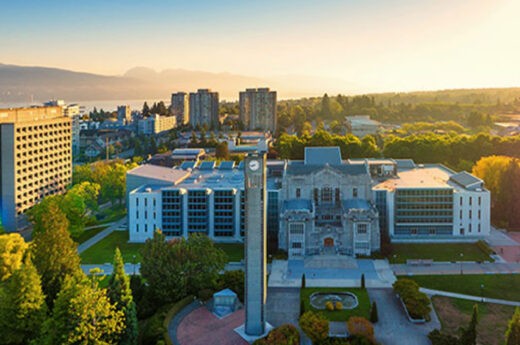
In the top three, the University of British Columbia is ranked third in Canada and 45th worldwide, up six places from last year. The University of British Columbia, which is ranked 28th in the world for academic reputation, aspires to welcome innovation and question the existing quo.
UBC is located in the most significant Northern British Columbia city and is ranked as Canada’s third finest university. The university is focused on research and teaches in a practical, hands-on manner.
This, combined with the fact that everyone at the university has an international perspective, makes it a particularly welcome environment for international students from all over the world.
University size: Two campuses are located in Vancouver, one near the shore and the other in Kelowna, in the Okanagan Valley. To facilitate teaching and research relationships and serve alumni, UBC operates a Regional Office in Hong Kong and a Liaison Office in New Delhi, India. Over 66,000 students attend UBC, with over 18,000 foreign students representing 166 nations.
There are more than two dozen academic divisions on the Vancouver campus, while there are eight on the Okanagan campus. Both schools’ academic calendars comprise two-term winter and summer sessions, with the summer session being optional.
English is the predominant language of instruction at UBC. First-year overseas students can participate in UBC’s Vantage College’s Vantage One programme, which attempts to assist students improve their English by extending their first year of education from eight to eleven months.
4. McMaster University
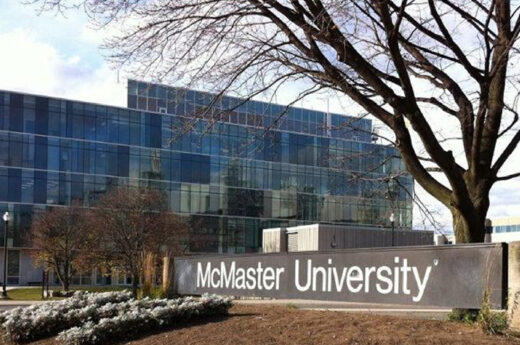
McMaster University was established in 1887 as a public university. The main campus of the Canadian institution is located in a suburban area of Hamilton, Ontario, near the western shore of Lake Ontario and not far from the United States border. Other locations include Hamilton, Burlington, Kitchener-Waterloo, and Niagara Falls.
More than 75 nations are represented among the university’s international students, while more than 55 countries are represented among its full-time teachers. Non-Canadian students pay a higher tuition rate.
Themed living communities such as an all-female community, a healthy active living community, and a global perspectives community are accessible through university-run student housing.
University size: There are four campuses: one in Hamilton at the Royal Botanical Gardens, one in Burlington, one in Kitchener-Waterloo, and one in Niagara. Over 33,000 students, including international students from 120 countries, are enrolled.
Engineering, health sciences, humanities, science, social sciences, and the DeGroote School of Business are the university’s six main academic divisions, with English as the predominant medium of instruction.
In addition, the university has its own nuclear reactor for research purposes. One-fifth of Albert Einstein’s brain is preserved in a jar at one of the university’s laboratories, where a McMaster neuroscientist studies it and other specimens.
5. University of Alberta
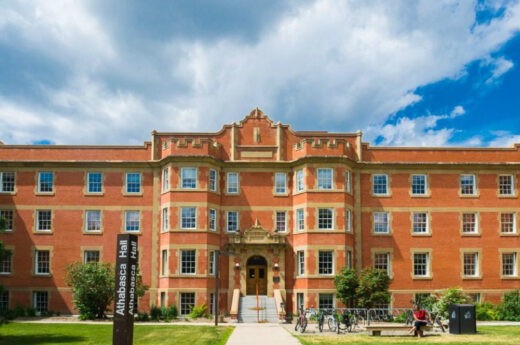
The University of Alberta has established itself as one of the leaders among educational institutions not just in Canada but also globally, with a strong QS world ranking of 126 in 2021.
A top 5 Canadian university in Edmonton, with 40,000 students spread over 18 faculties on five campuses. Humanities, sciences, creative arts, business, engineering, and health sciences are all areas where the institution excels.
The university has five campuses, four of which are located in Edmonton, including the
major North Campus, which spans over 50 city blocks.
University size: Edmonton has four university campuses, as well as one in Camrose, Alberta, making it Canada’s sixth largest university. Over 38,00 pupils are currently enrolled.
Arts, business, engineering, and medicine are among the subjects offered at the university. With the exception of the university’s Campus Saint-Jean, where French is the predominant language of education, English is the language of instruction.
Major research institutions, such as the interdisciplinary National Institute for Nanotechnology, are linked with the University of Alberta. In addition, the institution has over 400 research, teaching, and exchange agreements with schools and other organisations throughout the world, including the University of Munich in Germany and the University of Western Australia.
6. University of Calgary
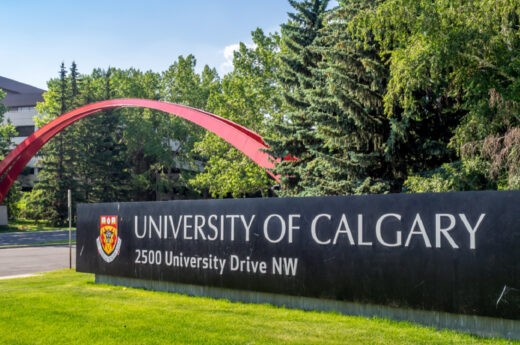
The University of Calgary is one of Canada’s premier research universities, having been created in 1966. The school’s objective is to be a global intellectual centre and one of the country’s top five research institutions. It is located in the province of Alberta.
The University of Calgary is one of the most prestigious universities in the country, offering top-notch medical science courses. Nursing and Management Technology is offered as a bachelor’s and master’s degree programme.
The university believes in providing students with courses that combine theory and future.
practical knowledge, as well as innovation and technology, in order to prepare them for a bright
University size: Main, Downtown, Foothills, Spyhill, and Qatar are the five campuses. The main campus is nearly 200 hectares in size and has panoramic views of the Rocky Mountains. There are currently around 33,000 students enrolled, with about 26,000 undergraduates and over 6,000 graduate students.
Calgary is also home to one of the country’s best comprehensive research universities. It undertakes ground-breaking research in a variety of fields, including energy, chronic diseases, biomedical engineering, mental health, and others.
7. Queen’s University
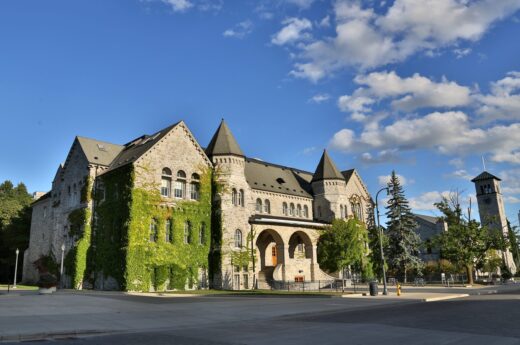
Queen’s University in Kingston, Ontario (commonly known as “Queen’s”) was founded in 1841 and is one of Canada’s major research universities, as well as a leader in extracurricular activities.
Queen’s University, in Kingston, Ontario, is ranked 9th in Canada this year, having dropped seven places in the international rankings to equal 246th. In the employer reputation indicator, the university is ranked 99th in the world.
University size: The main campus is located on 99 acres in Kingston, Ontario, and is bordered to the south by Lake Ontario. Over 26,000 students are now enrolled, with over 19,000 undergraduates and over 3,000 graduate students. It also serves as a home to students from over 100 different countries.
The institution provides a transformative learning experience with over 150 programmes offered across eight faculties. Arts & Science, Education, Engineering, Health Sciences, Graduate Studies, Law, Business, and Policy are some of these fields.
8. Dalhousie, Halifax
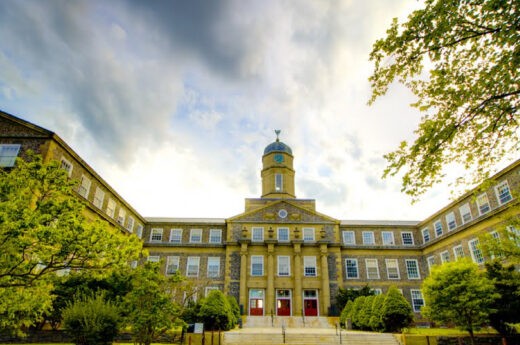
Dalhousie University is one of Canada’s oldest universities, having been founded in 1818. It’s in Halifax, Nova Scotia, on the East Coast. It provides a bespoke studies programme through the Foundation School of Performing Arts, as well as a collaborative food business programme with Aeres University in the Netherlands.
Dalhousie University has 13 faculties with over 200 degree programmes, all of which are supported by classroom innovation and a focus on interactive learning. Dalhousie University, as Atlantic Canada’s foremost research university, excels at collaborating with industry and providing opportunities for discovery.
90% of students participate in work-integrated learning, which allows them to learn from experienced professionals, build skills relevant to their subject of interest, and gain practical information from specialists.
University size: Dalhousie University in Halifax comprises three campuses, as well as an Agricultural Campus near Truro and Dalhousie Medicine New Brunswick. More than 19,000 students from all over the world attend the institution.
Times Higher Education’s newest Global University Employability Rankings place Dalhousie University in the top 200. (THE). IBM, CIBC, Deloitte & Touche, Scotia Bank, and Dell are among the university’s top recruiters. Check out the Dalhousie University Rankings as well.
9. University of Ottawa
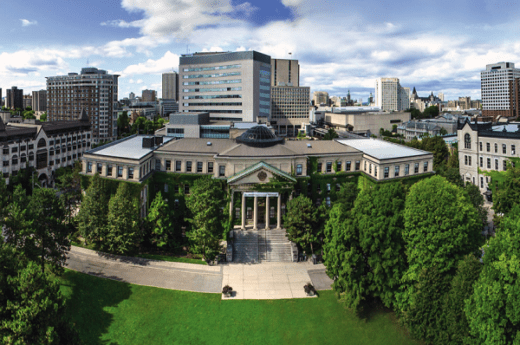
The University of Ottawa (also known as UOttawa) is one of Canada’s top 10 research universities and the world’s largest bilingual university. Its cooperative education programmes are also well-known.
Students at the University of Ottawa have the option of studying in English, French, or both. The university’s outstanding score of 81.1 for international outlook reflects its commitment on cultural justice, inclusiveness, and diversity.
It also has 35,791 full-time students and a high citation score of 83.3. This means that
international students studying in the United States can expect average to bigger class sizes.
University size: There are three campuses at the University of Ottawa. The major one is in the Canadian capital, just a short walk from Parliament Hill. In addition, there are campuses in Toronto and Windsor, Ontario. In ten disciplines, there are approximately 37,000 undergraduate students and over 7,000 graduate students.
10. University of Montreal
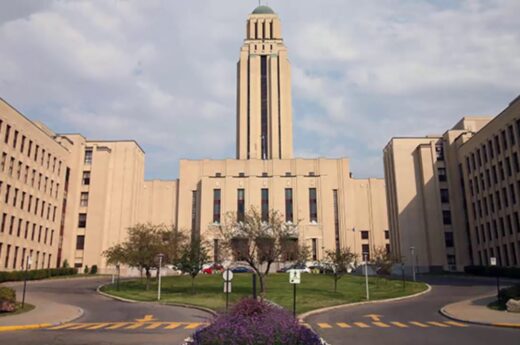
The University of Montreal (Université de Montréal) is a francophone university in Quebec that is noted for its sports teams and alumni who go on to become well-known commercial and scientific leaders.
The university and its affiliated schools are located in Montreal, Quebec, which is one of Canada’s most populous cities. Approximately one-fourth of the student body at each of the three universities is pursuing a graduate degree. Housing is available for full-time undergraduate and graduate students at the university.
University size: The main campus is located on Montreal’s north slope of Mount Royal. The Polytechnique Montreal and HEC Montreal are two of its affiliated schools (School of Business). It is Canada’s third most international institution, with about 67,500 students enrolled, including around 10,000 overseas students.
The university’s academic calendar is structured on a semester basis, and international students pay extra tuition. Among the university’s many research units are the Institute for Research in Immunology and Cancer, the Cyberjustice Laboratory, and the International Centre for Comparative Criminology.
Some University of Montreal scholars work on projects with institutions in other countries, particularly in France, Germany, Italy, the United Kingdom, and the United States.
Benefits of Studying in Canada Universities
We frequently hear that a large number of young Indian students are interested in attending Canadian universities. According to the Times of India, Canada has accepted study permits for over 67,000 Indian students in the first four months of 2021.
In addition, 30,000 overseas students were granted permanent residency in Canada, with Indians accounting for 1/3 of the total. This reveals a lot about the friendship between Indians and Canadians.
Affordable: Only affluent Indian families could afford to send their children to study abroad a decade ago. However, most Indians can afford Canada’s tuition and living costs. Tuition prices as low as Rs.1.25 lakh per year are possible.
Quality: According to EduCanada, Canada has the finest quality of life in the world. International students will find it simpler to acclimatise to a new country in Toronto, Ontario, and Montreal, which are both student-friendly cities.
Frequently Asked Questions
Most affordable universities in Canada:
The Memorial University of Newfoundland – tuition fees: 2,150 – 11,460 CAD/year.
University of Regina – tuition fees: 1,715 – 20,050 CAD/year.
Simply, as previously stated, there are no tuition-free universities in Canada for international students. Even for Canadian students, there are no tuition-free universities. You can, however, study without paying tuition by receiving a full-tuition or even fully-funded scholarship.
After completing a one-year study programme, one of the best ways to obtain permanent residency is to apply for a Post Graduate Work Permit. This will not only help you get significant Canadian job experience, but it will also help you enhance your CRS score for Express Entry.
Many universities have their own internal review processes for applications that have been submitted. However, you should anticipate to hear back from the admissions committee within one month after submitting your application.
Final Thoughts
Before determining where to apply as an international student, it’s a good idea to familiarise yourself with Canada’s post-secondary schools. You’ll be aware of your university options, be able to apply for your Canadian student visa, and be on your way to success!
Best college/University for software developer please help me….
Want to know more requirements for admission.
Best college/university for CS & IT After 12th and costs.
Please help!!
Hello Akshit bhaiya,
We can get student loan and then study abroad in canada🇨🇦?
Akshit bhaiya,
In which university we can do BCA
OR BBA?
Dear Akshit
Thank you for this platform
I want to apply for both my daughters for the Memorial University in New Found land one for Masters and one for Bachelors
Have Already wasted a big amount with the agents
I cannot risk to do this again
Can u please guide me through this